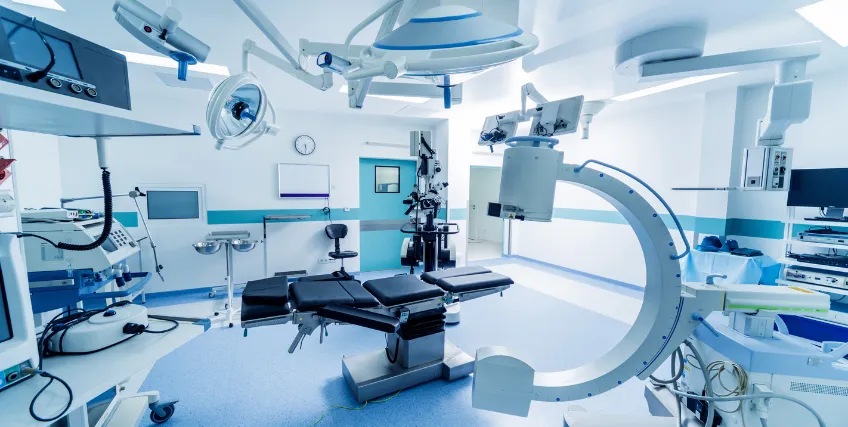Loan For Doctors in the USA:
Eligibility, Types & Application Guide
Looking for Business Financing?
Apply now for flexible business financing. Biz2Credit offers term loans, revenue-based financing, lines of credit, and commercial real estate loans to qualified businesses.
Set up a Biz2Credit account and apply for business financing.
Doctors often work under extremes as their work involves high risk and almost no room for mistakes. Their schedules are demanding, liability is high, and managing a practice is more complex than most small businesses. Many also start their careers backed by hefty education loans, making it harder for them to invest in growth. A loan for doctors can ease this load and support their medical career.
Doctor loan programs offer flexible funding for clinic set-ups, equipment upgrades, or expansion plans. These business loans for doctors are curated to match the fast-paced medical industry and the financial needs that come with it. Business loans for medical professionals can also help doctors manage cash flow and reduce financial stress. With clear doctor loan eligibility rules, borrowers can choose the best loan for doctors based on their goals. This article will explain how a loan for doctors works, what lenders look for, and how to select the best doctor loan program for your practice.
Types of Loans for Doctors
Doctors in the USA have access to varied financing options, that back both personal and professional needs. These include specialized home loans, personal funding, business and practice loans, equipment financing, working capital support, real estate loans, and short-term cash flow solutions. Doctors can also opt for student debt refinancing and federal programs that offer repayment or waivers, which helps them manage the hefty cost of medical education while building careers. Listed below are some of the common types of loans for doctors:
Physician Mortgage Loans (aka Doctor Loans)
These are specialized home loans for medical professionals that often require low or no down payment and commonly waive Private Mortgage Insurance. However, exact terms vary by lender. They also use flexible income rules, such as accepting signed employment contracts as proof of future earnings.
SBA Loans
These government backed loans support larger practice investments, equipment purchases, or property financing, with eligibility and loan limits set by SBA rules.
Personal Loans
These can be used for personal needs, such as debt consolidation or major life expenses, with quick funding decisions. Typically, approval for this is mainly based on credit score and income.
Practice Purchase Loans
These loans support doctors who want to buy an existing medical practice, including assets, goodwill and sometimes real estate, depending on the lender.
Medical Practice Loans
This is a funding solution for clinic set-ups, expansions, renovations, or day-to-day operations.
Equipment Financing
This loan can be used to buy or upgrade diagnostic tools, imaging devices, or surgical equipment, wherein the equipment serves as collateral.
Working Capital Loans
These are short-term funding options, helping doctors manage cash flow, clear out payroll and tackle operational gaps.
Business Lines of Credit
This is a revolving credit facility, that allows doctors to borrow as needed and pay interest only on the amount used.
Commercial Real Estate Loans
This financing option can be used to purchase, build or refinance clinics and medical office buildings.
Loan for Doctors: Eligibility Requirements
Eligibility for a loan for doctors typically requires the applicant to be an accredited medical professional with a valid license, employment history, and good credit scores. Specific criteria vary by lender and loan type but the common eligibility requirements include:
Profession/Degree
Applicants must typically be a medical doctor (MD, DO), dentist (DDS, DMD), veterinarian (DVM), optometrist (OD), or podiatrist (DPM). Some lenders may include medical fellows, residents, or even students, with a valid employment contract.
Active Employment
Lenders commonly require proof of current employment, like recent pay stubs, bank statements, or an official employment contract.
Credit Score
While many conventional loans require high scores, some lenders offer doctor loans for credit scores which may not be above-average. However, a higher score may secure better terms.
US Residency
Applicants are usually required to be U.S. citizens or permanent resident aliens. Non-permanent residents may be eligible with a valid, unexpired visa and at least one year of U.S. credit history.
Debt-to-Income (DTI) Ratio
Physician loans are notable for their flexibility with DTI. Lenders often exclude or are considerate regarding existing student loan debt, when calculating DTI, understanding that future income will balance the debt.
Down Payment/Reserves
Some physician mortgage programs allow for 0% down payments. However, some lenders may require a minimum amount and cash reserves to cover debt obligations, between closing and employment start date.
Account Requirements
Certain banks may require applicants to open a checking or savings account with them prior to closing.
Typically Required Documentation
How to choose loan for doctors?
Choosing the “best” loan for doctors involves identifying financial goal (e.g., home purchase, debt consolidation, practice expansion) and comparing specialized doctor-specific loan programs. By using loans specifically designed for the medical field, doctors can access more favorable terms tailored to their needs. Truly, the right loan can make or break a business. So, here are some of the common points to consider when choosing a loan for doctors:
- Clear purpose helps determine the right loan type because each financial goal aligns with a different funding option.
- For home purchase or refinancing, physician mortgages are suitable because they often waive PMI, allow low down payments, and may accept future employment contracts for income checks.
- For student loan debt, refinancing or consolidation is common, and federal income driven repayment plans remain useful for managing federal loans.
- For practice expansion, equipment needs, or general expenses, personal loans for physicians or specialised business loans offer higher limits and flexible terms based on medical credentials.
- Many specialist lenders, including major banks and medical focused institutions, provide products that may ignore student debt in DTI calculations.
- Loan terms need careful review, including interest rate (APR), loan amount, repayment tenure, and any fees such as origination or prepayment charges.
- Some physician focused personal loans are unsecured and do not require collateral, which reduces risk for medical professionals.
- A strong credit score supports better loan terms and lower interest rates.
- Financial guidance from an advisor familiar with medical professionals, can help match loan choices to career stage and financial goals.
Steps to Apply for Medical Professional Business Loans
To apply for a loan for doctors in the USA, at first, industry professionals need to be sure of their needs and gather all necessary documents. These can include personal and business tax returns, financial statements, and a business plan. Doctors should then choose a lender, such as a traditional bank or an online lender, who has experience lending to physicians. The final step includes submitting a complete, accurate loan application and follow-up with the lender, providing any additional information requested. Here are the key steps to consider, when applying for a loan for doctors:
Plan and prepare
- Review funding needs, including the exact amount and purpose.
- Create a business plan with financial projections and planned use of funds.
- Gather key documents such as tax returns, bank statements, balance sheets, income statements, licences, incorporation papers, resumes of key staff, and lease agreements.
- Check personal and business credit scores to ensure they meet lender requirements.
Choose a lender
- Compare lenders such as banks, credit unions, online lenders, and medical practice specialists.
- Review SBA options like SBA 7(a) and SBA 504 through approved lenders.
- Speak with verified lenders to understand products, terms, and eligibility.
Apply for the loan
- Submit the completed application with all supporting documents.
- Undergo the lender’s underwriting process, which includes review of credit and financials
- If approved, review and sign the loan agreement outlining terms and rates.
- Receive fund disbursement into the business account after closing.
Loan for Doctors: Mistakes to Avoid
When it comes to securing a loan for doctors, there are a few key mistakes that needed to be avoided. This may be applying for too many loans at the same time, taking on too much debt or neglecting other financial priorities. It is important for medical professionals to stay aware of common pitfalls that can weaken their financial health. Here are some key mistakes to avoid:
01 Borrowing and repayment mistakes
- Taking on debt for non-essential expenses may increase long-term financial pressure.
- Keeping loans in deferment for too long leads to interest build up.
- Lacking a clear repayment plan makes debt more expensive and harder to manage.
- Relying on income-based repayment plans when not needed, increases total interest paid.
- Missing chances to repay loans quickly slows down overall debt reduction.
02 Lender and loan type mistakes
- Not comparing lenders, interest rates and fees can lead to higher borrowing costs.
- Choosing a standard loan instead of a doctor focused product may result in less favourable terms.
- Applying for many loans at once can trigger multiple hard credit checks and lower credit scores.
03 Overall financial mistakes
- Overlooking credit score health can make borrowing more costly or limit approvals.
- Poor budgeting and weak cash flow management can create financial instability.
- Using retirement funds early can lead to penalties and long-term losses.
Loan For Doctors: Financing That Supports Those Who Heal
A loan for doctors or a business loan for medical professionals, helps medical students, medical residents and practising doctors manage both personal and professional costs smoothly. Such financing can support clinic upgrades, healthcare equipment purchase, home buying and other needs through flexible loan options. Lenders check credit reports, debt-to-income ratio and disclosures during the application process, and credit approval, relies on financial health. Some doctor mortgage loans follow NMLS rules and help first-time buyers secure primary residences with fixed rate choices, clear annual percentage rates, steady mortgage payment plans and simple monthly payments. Online banking tools also make it simpler to track loan payments, handle credit cards and review statements.
Every lender provides a disclaimer and disclosures that explain fees, such as an origination fee or early repayment conditions. A loan officer can help applicants compare interest rate discount offers and long-term loan payments. Many institutions operate as Member FDIC and Equal Housing Lender organisations to maintain safety and fairness. In simple words, a loan for doctors keeps borrowing stress low and helps them plan their life, career and finances with confidence.
Trusted by Thousands of Small Business Owners in America.**
Simply because we get what you go through to build a business you believe in.
**Disclaimer: All stories are real, as told by real business owners. Customers do not receive monetary compensation for telling their stories.
From One Entrepreneur to Another: We Get You
We understand what's behind building a business you believe in.
All stories are real, as told by real business owners. Customers do not receive monetary compensation for telling their stories.



Loans For Doctors Articles
Should Medical Professionals Consider Secured Loans for Practice Expansion
Healthcare professionals can use secured loans for the expansion of their clinic. With the right asset and repayment plan
The 5 Best Business Loans for Physicians With Bad Credit
Life as a medical professional can be both lucrative and fulfilling. But if you’re a physician operating a private practice, it can also be a very expensive one.
How to Open a Medical Practice
Starting a private medical practice can feel intimidating. While a private practice may raise your earning potential and enable you to give
Best Loans for Physicians of 2026
Between your profession and your personal life, you might not have time to evaluate financial products that can help you accomplish your goals.
The Best Financing for Buying a Dentist’s Office
Buying a small business can be a great opportunity for entrepreneurs, but it isn’t always a straightforward process.
FAQs About Loan for Doctors
1. What are the eligibility requirements for a loan for doctors?
Most lenders ask for medical degree proof, active doctor's licence, minimum years of practice, credit score, annual revenue, and business stability. Some lenders may approve new practitioners with limited experience. For those starting residency, lenders may ask for a signed employment contract.
2. Can the loan be used for both personal and professional expenses?
Some loans for doctors are specialized, like physician mortgages for buying a home or equipment financing for medical machinery. Other doctor loans are more flexible, functioning as personal loans or business loans that can cover various costs, including debt consolidation, practice expansion and even personal needs.
3. What kind of interest rates, fees, and charges can doctors expect?
Interest rates vary based on credit strength, loan type, and the lender. Doctors may also need to pay processing charges, documentation fees, or small foreclosure costs. Many borrowers ask about part prepayments because some lenders limit early repayment or apply a small penalty for closing the loan early.
4.Is collateral required for a loan for doctors, and can doctors get approved with student debt?
Many lenders offer unsecured doctor loans, so collateral is not always required. However, in some cases it may be required. The loan approval depends on income, credit score, and overall financial profile. Doctors with high student debt may still qualify because lenders often consider medical education loans as usual for the profession.
5. What can a loan for doctors be used for?
A loan for doctors comes in various forms, such as physician mortgages and personal or business loans. A doctor loan can be used to start a clinic, fund purchases of new equipment, pay for renovations, hire staff and more. Some lenders also allow refinancing of existing medical loans.





